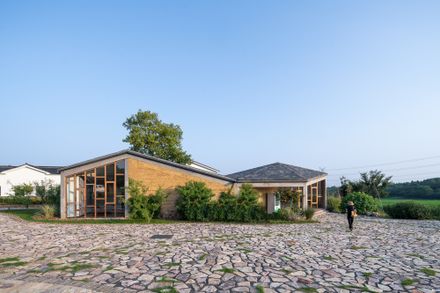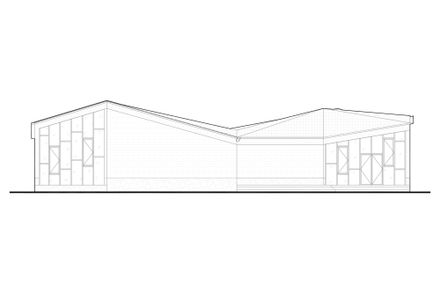The Niumatang Cultural Station
ARCHITECTS
Atelier Rentian
COLLABORATORS
Jiangsu Provincial Planning And Design Group
LEAD ARCHITECTS
Ren Tian
DESIGN TEAM
Zeng Yiheng, Wang Hao, Gao Tian、hu Yuqi
CLIENTS
Niumatang Village Committee
PHOTOGRAPHS
Inter_mountain Images
AREA
347 M²
YEAR
2019
LOCATION
Hang Zhou Shi, China
CATEGORY
Cultural Center
Niumatang Village is located in the western part of Liyang City, between the two major mountain systems of Caoshan and Wawu Mountain, and is only 25km away from the urban area of Liyang.
The villagers are mostly Wenzhou immigrants who migrated here 150 years ago, and the unique inheritance of Oujiang culture constitutes the profound cultural heritage of the village.
Afterward, through water system management and land regulation, the geographical characteristics of the village's current farmland, ponds, and other natural surroundings were established.
The project is located at the entrance of Niumatang Village. The purpose of the Niumatang Cultural Station is to create a village gate building that integrates cultural display, leisure for villagers and tourists, and transportation post stations, and to build a public activity place that promotes neighborhood communication and provides tourists with sightseeing.
The Niumatang Cultural Station adopts a cast-in-place concrete frame structure, with a roof composed of undulating triangles, echoing the towering peaks of Caoshan and Wawu Mountain in the distance.
The architectural plan is a regular hexagonal shape, and in the regular plan, irregular and varying height column grids are used.
Considering the multiple functions of the post station, it forms an open space with multiple functional spaces, allowing villagers, tourists, and children to shuttle around freely.
Traditional Chinese dwellings often revolve around a central courtyard, forming an inward-facing compound with a basic topology structure in the form of the Chinese character "回" shape.
In this architecture, a similar spatial arrangement is employed, where functional spaces on all sides unfold around an inner courtyard.
This design not only ensures excellent ventilation and natural light for the interior but also provides a more distinct layout for the architectural exhibition spaces.
During my initial visit to Niu Matang Village, I noticed several small houses constructed from adobe bricks, indicating the local tradition of utilizing raw earth as a building material.
As a result, I made the decision to incorporate raw earth as infill walls within the architectural design, blending it with the frame structure.
Due to the sloping roof design, a combination of adobe bricks and rammed earth was employed during the construction process.
The primary facades feature extensive rammed earth infill walls, while the roof is covered with flat tiles. The base of the walls utilizes locally distinctive dry-stacked rubble stone masonry.
The local traditional clay tiles were not chosen for the roof. Contemporary clay tiles are too large, while the smaller antique blue tiles of the past have a retro feel.
Moreover, many clay tiles are curved, making it difficult to install them at the corners of the folded roof. Therefore, the final choice for the roof material was slate tiles.
The varying shades of gray on the slate tiles echo the distant mountains in a misty manner. The undulating roof blends seamlessly, with the architecture seemingly disappearing into nature.
The rammed earth walls resemble the undulating earth, harmonizing with the surrounding trees and mountains, creating a picturesque landscape.
































